High Temperature Deformation Mechanisms in a DLD Nickel Superalloy
Abstract
:1. Introduction
2. Materials and Methods
2.1. C263 Variants
2.2. SPT Testing
2.3. Sample Preparation
2.4. Microscopy
3. Results
3.1. Small Punch Test Results
3.2. Uniaxial Comparisons
3.3. Small Punch Fractography
3.4. Energy Dispersive X-ray Spectroscopy Analysis
4. Discussion
4.1. Room Temperature Small Punch Testing
4.2. High Temperature Small Punch Testing
4.3. Comparison with Uniaxial Testing
5. Conclusions
- PB-DLD material exhibited a stronger response to biaxial deformation at RT than traditional cast material. In the SHT variants, this increase in strength is directly attributed to the higher grain boundary density found in these materials in comparison to the cast variant.
- HSHT PB-DLD variants ranked highest at 780 °C during SPT testing. The dominant cracking form was intergranular across all C263 variations, highlighting the influence of grain size. Elevated temperature testing also revealed a columnar dendritic substructure in SHT builds, which is believed to have had an adverse effect on mechanical performance, and this feature was largely alleviated when the HSHT was applied.
- Based upon strong correlations of known uniaxial to SP data, equations have been established to correlate SP to uniaxial results for nickel superalloy C263, and .
- From EDS results, it was found that the SHT PB-DLD variant microstructures contained segregates of γ’-forming elements, suggesting that they are not contributing to the precipitation of these phases. The fact that this is not present in HSHT builds suggests that the formation of γ’ is further encouraged in HSHT variants due to the higher solution temperature, strengthening the material during room and high temperature testing.
Acknowledgments
Author Contributions
Conflicts of Interest
References
- Murr, L.E.; Gaytan, S.M.; Ramirez, D.A.; Martinez, E.; Hernandez, J.; Amato, K.N.; Shindo, P.W.; Medina, F.R.; Wicker, R.B. Metal Fabrication by Additive Manufacturing Using Laser and Electron Beam Melting Technologies. J. Mater. Sci. Technol. 2012, 28, 1–14. [Google Scholar] [CrossRef]
- Illston, T. Material Solutions-Additive Manufacturing. U.S. Patent Application No. US 2014/0034626 A1, 6 February 2014. [Google Scholar]
- Lancaster, R.J.; Banik, R.; Hurst, R.C.; Bache, M.R.; Baxter, G. Application of Small Punch Test Methods to Advanced Manufactured Structures. In Proceedings of the 3rd International SSTT Conference: Determination of Mechanical Properties of Materials by Small Punch and other Miniature Testing Techniques, Schloss Seggau, Austria, 23–25 September 2014; pp. 170–178. [Google Scholar]
- Vilaro, T.; Colin, C.; Bartout, J.D.; Nazé, L.; Sennour, M. Microstructural and Mechanical Approaches of the Selective Laser Melting Process Applied to a Nickel-Base Superalloy. Mater. Sci. Eng. A 2012, 534, 446–451. [Google Scholar] [CrossRef]
- Yadroitsev, I.; Gusarov, A.; Yadroitsava, I.; Smurov, I. Single Track Formation in Selective Laser Melting of Metal Powders. J. Mater. Process. Technol. 2010, 210, 1624–1631. [Google Scholar] [CrossRef]
- Gong, H.; Rafi, K.; Starr, T.; Stucker, B. The Effects of Processing Parameters on Defect Regularity in Ti-6Al-4V Parts Fabricated By Selective Laser Melting and Electron Beam Melting. In Proceedings of the 24th Annual International Solid Freeform Fabrication Symposium, Austin, TX, USA, 12–14 Augest 2013. [Google Scholar]
- Kunze, K.; Etter, T.; Grässlin, J.; Shklover, V. Texture, Anisotropy in Microstructure and Mechanical Properties of IN738LC Alloy Processed by Selective Laser Melting (SLM). Mater. Sci. Eng. A 2012, 620, 213–222. [Google Scholar] [CrossRef]
- Bruchhausen, M.; Holmstr, S. Recent Developments in Small Punch Testing: Tensile Properties and DBTT. Theor. Appl. Fract. Mech. 2016, 86, 2–10. [Google Scholar] [CrossRef]
- Lancaster, R.J.; Davies, G.; Illsley, H.; Jeffs, S.P.; Baxter, G. Structural Integrity of an Electron Beam Melted Titanium Alloy. Materials 2016, 9, 470. [Google Scholar] [CrossRef]
- Hurst, R.C.; Lancaster, R.; Norton, G.; Banik, R.; Bache, M.R. A Renaissance in Small Punch Testing at Swansea University. In Proceedings of the International Conference on Fast Tools for Condition and Life Assessment of Power Plants, Helsinki, Finland, 11–13 June 2013. [Google Scholar]
- Abendroth, M.; Kuna, M. Determination of Ductile Material Properties by Means of the Small Punch Test and Neural Networks. Adv. Eng. Mater. 2004, 6, 536–540. [Google Scholar] [CrossRef]
- Soltysiak, S.; Selent, M.; Roth, S.; Abendroth, M.; Hoffmann, M.; Biermann, H.; Kuna, M. High-Temperature Small Punch Test for Mechanical Characterization of a Nickel-base Super alloy. Mater. Sci. Eng. A 2014, 613, 259–263. [Google Scholar] [CrossRef]
- Special Metals Corporation. Nimonic 263. 2004. Available online: http://www.specialmetals.com/assets/documents/alloys/nimonic/nimonic-alloy-263.pdf (accessed on 1 February 2017).
- Manonukul, A.; Dunne, F.P.E.; Knowles, D.; Williams, S. Multiaxial Creep and Cyclic Plasticity in Nickel-base Superalloy C263. Int. J. Plast. 2005, 21, 1–20. [Google Scholar] [CrossRef]
- Carter, L.N.; Martin, C.; Withers, P.J.; Attallah, M.M. The Influence of the Laser Scan Strategy on Grain Structure and Cracking Behaviour in SLM Powder-Bed Fabricated Nickel Superalloy. J. Alloys Compd. 2014, 615, 338–347. [Google Scholar] [CrossRef]
- Reed, R.C. The Superalloys: Fundamentals and Applications; Cambridge University Press: Cambridge, UK, 2006. [Google Scholar]
- European Code of Practise: Small Punch Test Method for Metallic Materials; CEN Workshop Agreement, CWA 15267; CEN-European Committee for Standardization: Brussels, Belgium, 2007.
- Standard Practice for Microetching Metals and Alloys; ASTM E407-07(2015)e; ASTM International: West Conshohocken, PA, USA, 2015.
- Norris, S.D.; Parker, J.D. Deformation Processes During Disc Bend Loading. Mater. Sci. Technol. 1996, 12, 163–170. [Google Scholar] [CrossRef]
- Gopinath, K.; Gogia, A.K.; Kamat, S.V.; Balamuralikrishnan, R.; Ramamurty, U. Tensile Properties of Ni-Based Superalloy 720Li: Temperature and Strain Rate Effects. Metall. Mater. Trans. A Phys. Metall. Mater. Sci. 2008, 39, 2340–2350. [Google Scholar] [CrossRef]
- Moreno, M.F.; Bertolino, G.; Yawny, A. The Significance of Specimen Displacement Definition on the Mechanical Properties Derived from Small Punch Test. Mater. Des. 2016, 95, 623–631. [Google Scholar] [CrossRef]
- García, T.E.; Rodríguez, C.; Belzunce, F.J.; Suárez, C. Estimation of the Mechanical Properties of Metallic Materials by means of the Small Punch Test. J. Alloys Compd. 2014, 582, 708–717. [Google Scholar] [CrossRef]
- Cuesta, I.I.; Alegre, J.M.; Lorenzo, M. Influence of Strain State in Mechanical Behaviour of Aluminium Alloys using the Small Punch Test. Mater. Des. 2014, 54, 291–294. [Google Scholar] [CrossRef]
- Dobeš, F.; Dymáček, P.; Besterci, M. Estimation of the Mechanical Properties of Aluminium and an Aluminium Composite after Equal Channel Angular Pressing by means of the Small Punch Test. Mater. Sci. Eng. A 2015, 626, 313–321. [Google Scholar] [CrossRef]
- Parrington, R.J. Fractographic Features in Metals and Plastics. Adv. Mater. Process. 2003, 161, 37–40. [Google Scholar]
- Turba, K.; Hurst, R.; Hähner, P. Evaluation of the Ductile-Brittle Transition Temperature in the NESC-I Material using Small Punch Testing. Int. J. Press. Vessels Pip. 2013, 111, 155–161. [Google Scholar] [CrossRef]
- Becker, W.T.; Lampman, S. Fracture Appearance and Mechanisms of Deformation and Fracture. ASM~Handb. 2012, 11, 559–586. [Google Scholar]
- Kayacan, R.; Varol, R.; Kimilli, O. The Effects of pre- and post-Weld Heat Treatment Variables on the Strain-Age Cracking in Welded Rene 41 Components. Mater. Res. Bull. 2004, 39, 2171–2186. [Google Scholar] [CrossRef]
- Wang, W.Z.; Hong, H.U.; Kim, I.S.; Choi, B.G.; Jeong, H.W.; Kim, M.Y.; Jo, C.Y. Influence of γ′ and Grain Boundary Carbide on Tensile Fracture Behaviors of Nimonic 263. Mater. Sci. Eng. A 2009, 523, 242–245. [Google Scholar] [CrossRef]
- Hansen, N. Hall-Petch Relation and Boundary Strengthening. Scr. Mater. 2004, 51, 801–806. [Google Scholar] [CrossRef]
- Callister, W.; Rethhwisch, D. Materials Science and Engineering, 8th ed.; John Wiley & Sons, Inc.: New York, NY, USA, 2011. [Google Scholar]
- Huang, H.-E.; Koo, C.-H. Effect of Solution-Treatment on Microstructure and Mechanical Properties of Cast Fine-Grain CM 247 LC Superalloy. Mater. Trans. 2004, 45, 554–561. [Google Scholar] [CrossRef]
- Harada, H.; Yamazaki, M.; Koizumi, Y.; Sakuma, N.; Furuya, N.; Kamiya, H. Alloy Design for Nickel-Base Superalloys. In High Temperature Alloys for Gas Turbines; Springer Netherlands: Liege, Belgium, 1982. [Google Scholar]
- Antonysamy, A.A. Microstructure, Texture and Mechanical Property Evolution during Additive Manufacturing of Ti6Al4V Alloy for Aerospace Applications. Ph.D. Thesis, The University of Manchester, Manchester, UK, May 2012. [Google Scholar]
- David, S.A.; Babu, S.S.; Vitek, J.M. Welding: Solidification and Microstructure. J. Miner. Met. Mater. Soc. 2003, 55, 14–20. [Google Scholar] [CrossRef]
- You, X.; Tan, Y.; Shi, S.; Yang, J.-M.; Wang, Y.; Li, J.; You, Q. Effect of Solution Heat Treatment on the Precipitation Behavior and Strengthening Mechanisms of Electron Beam Smelted Inconel 718 Superalloy. Mater. Sci. Eng. A 2017, 689, 257–268. [Google Scholar] [CrossRef]
- Cottrell, A. An Introduction to Metallurgy, 2nd ed.; Crane, Russak: New York, NY, USA, 1975. [Google Scholar]
- Dong, X.; Zhang, X.; Du, K.; Zhou, Y.; Jin, T.; Ye, H. Microstructure of Carbides at Grain Boundaries in Nickel Based Superalloys. J. Mater. Sci. Technol. 2012, 28, 1031–1038. [Google Scholar] [CrossRef]
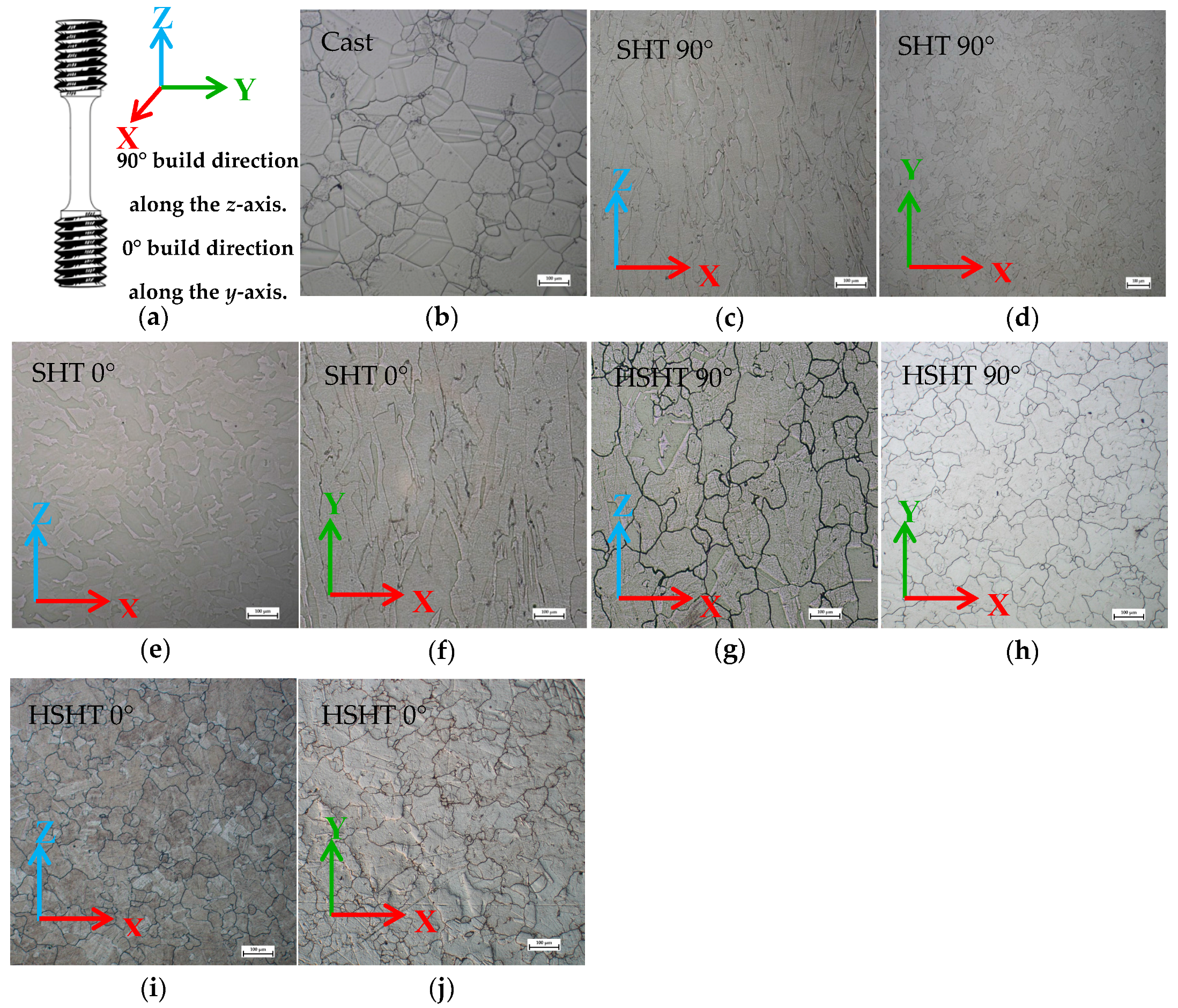
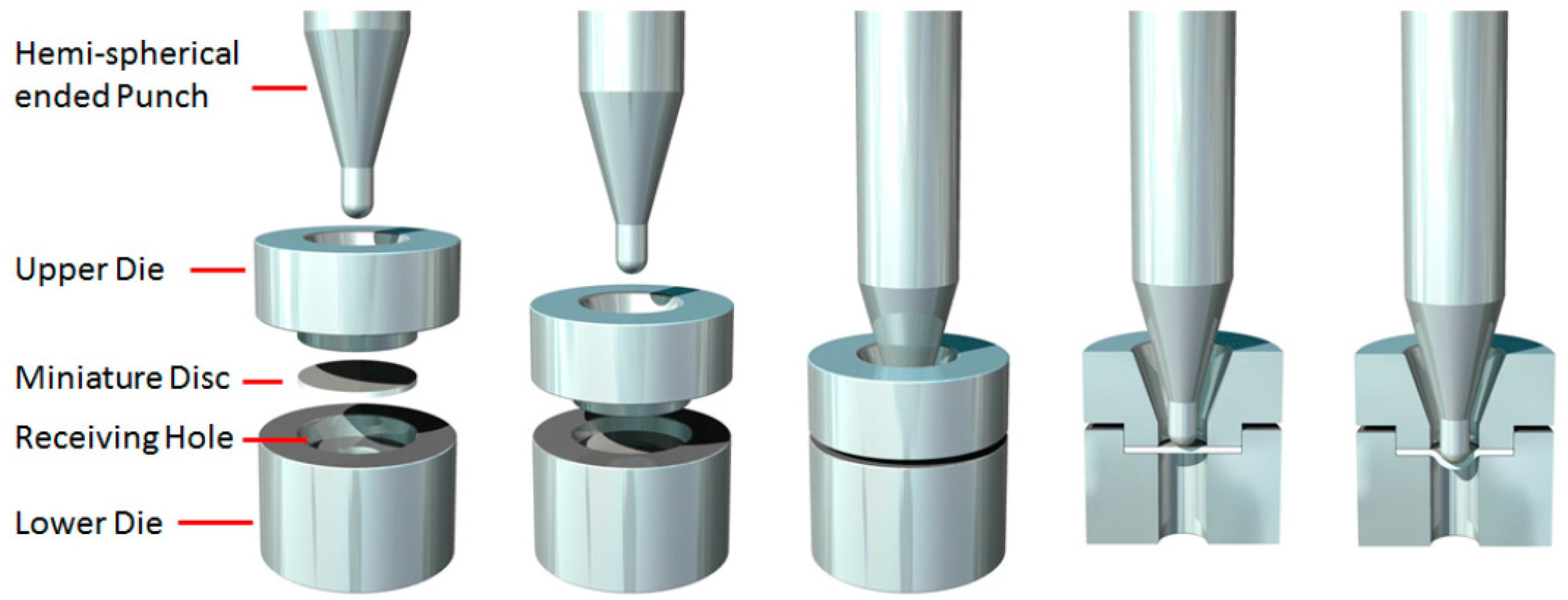

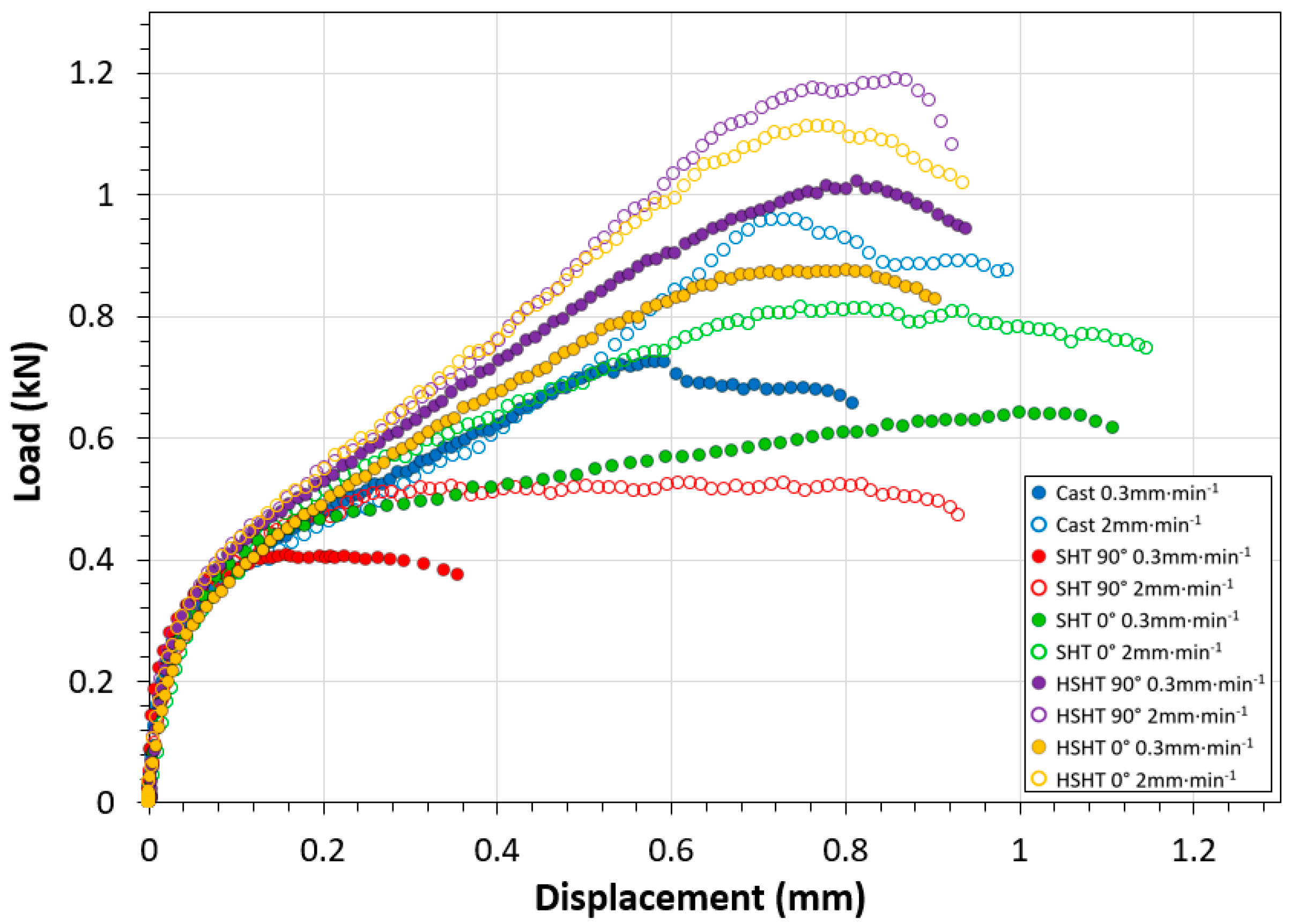
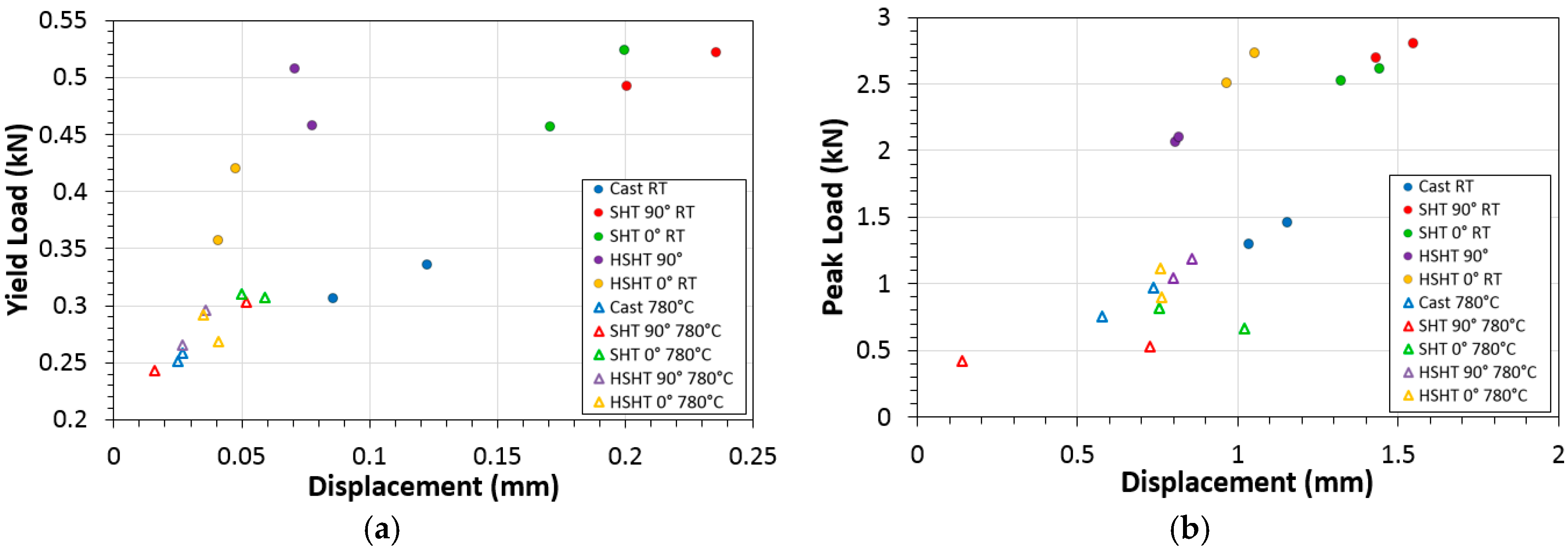
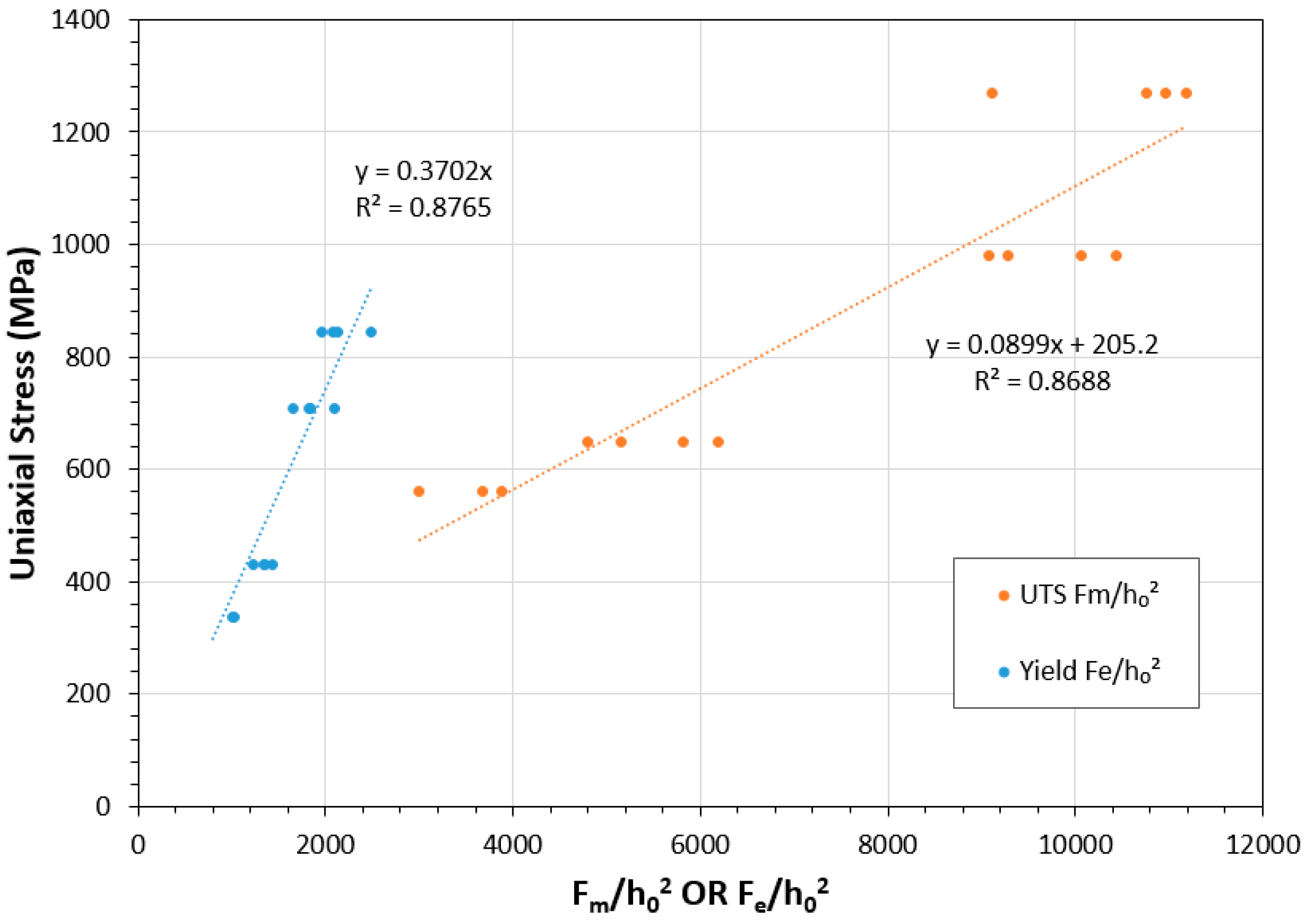
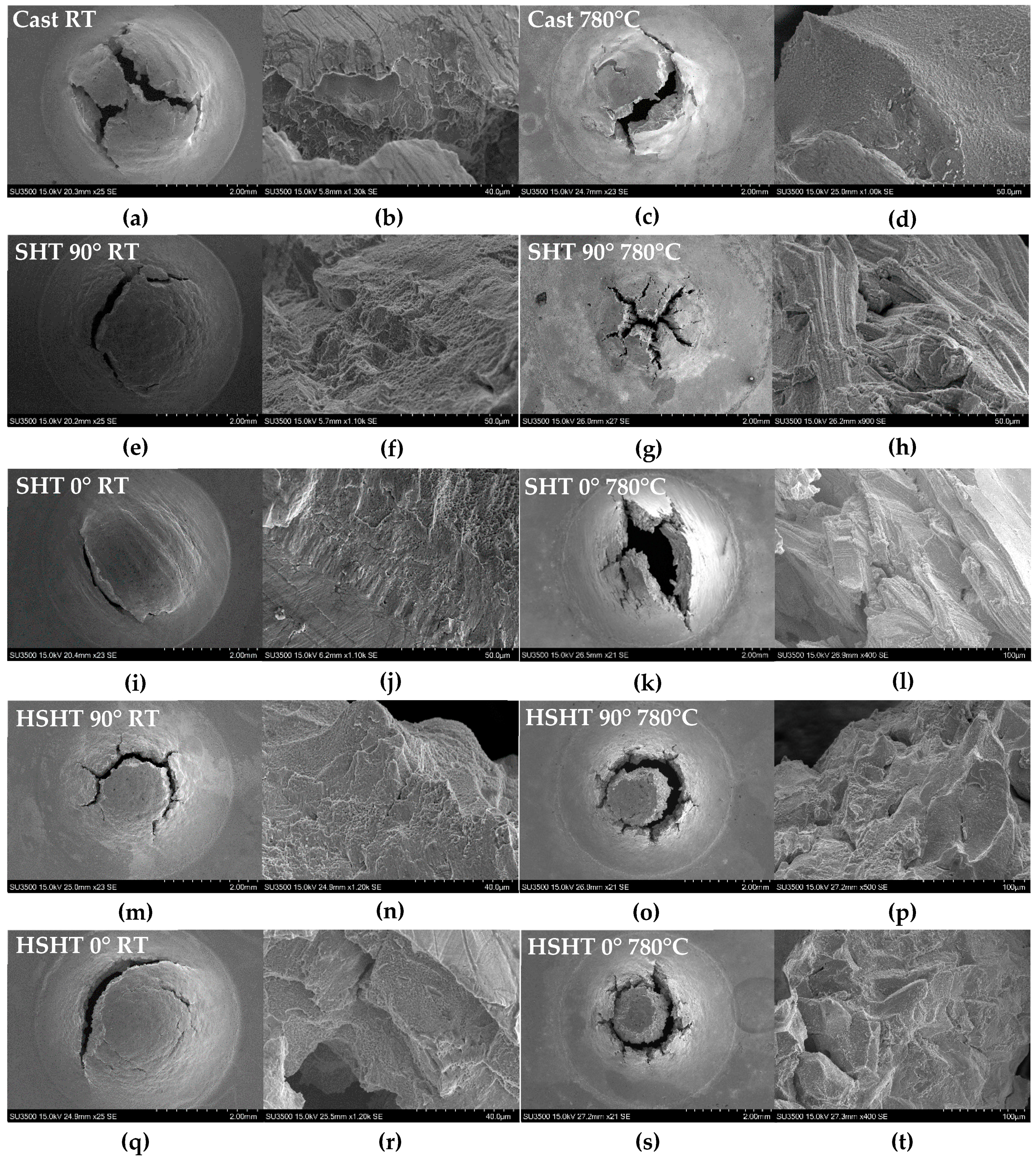
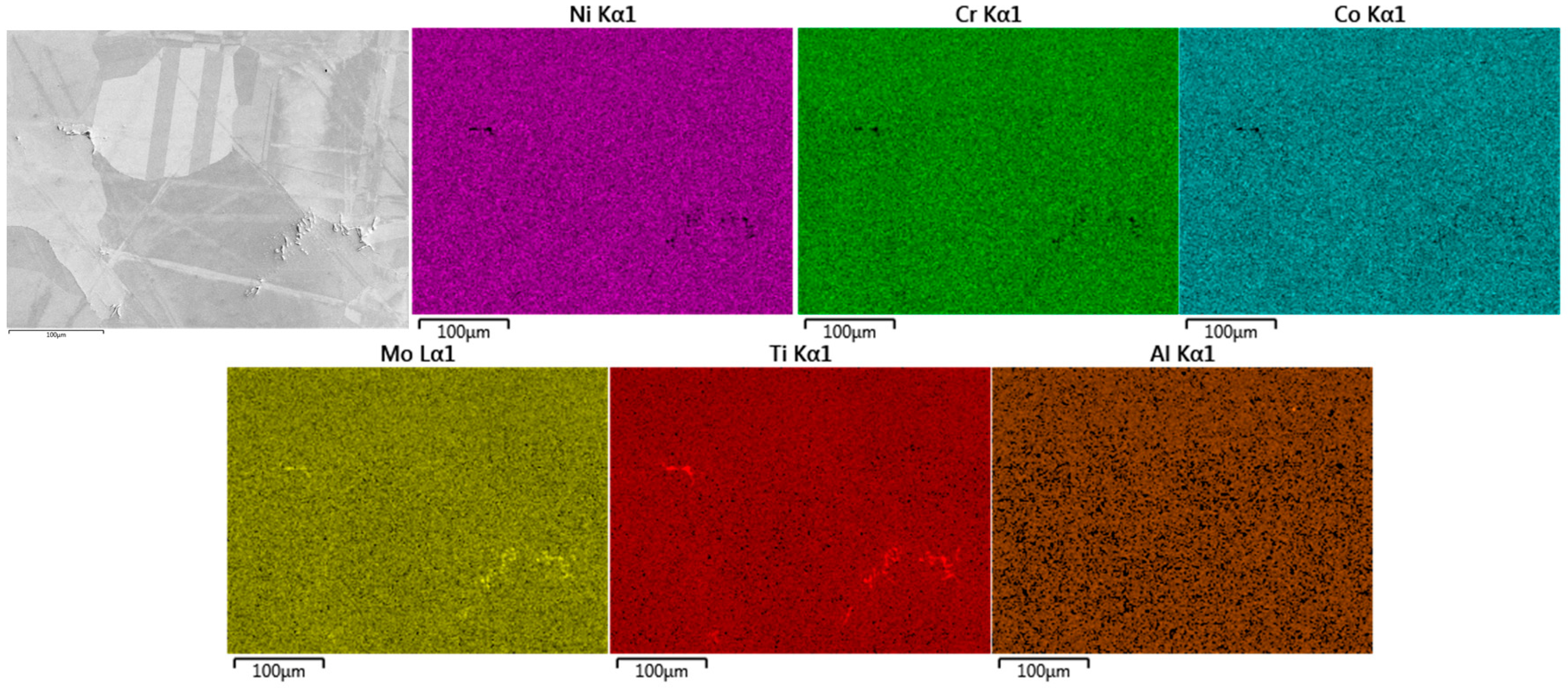
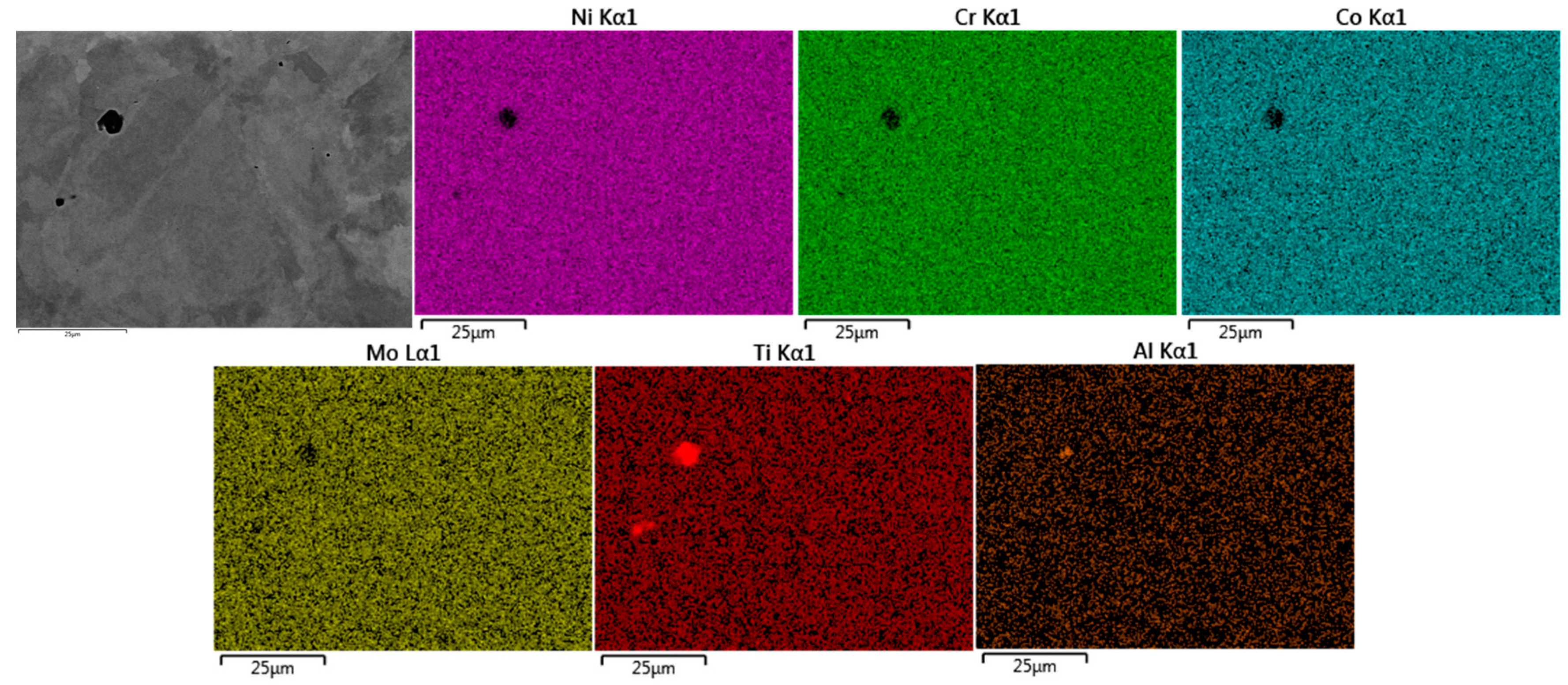
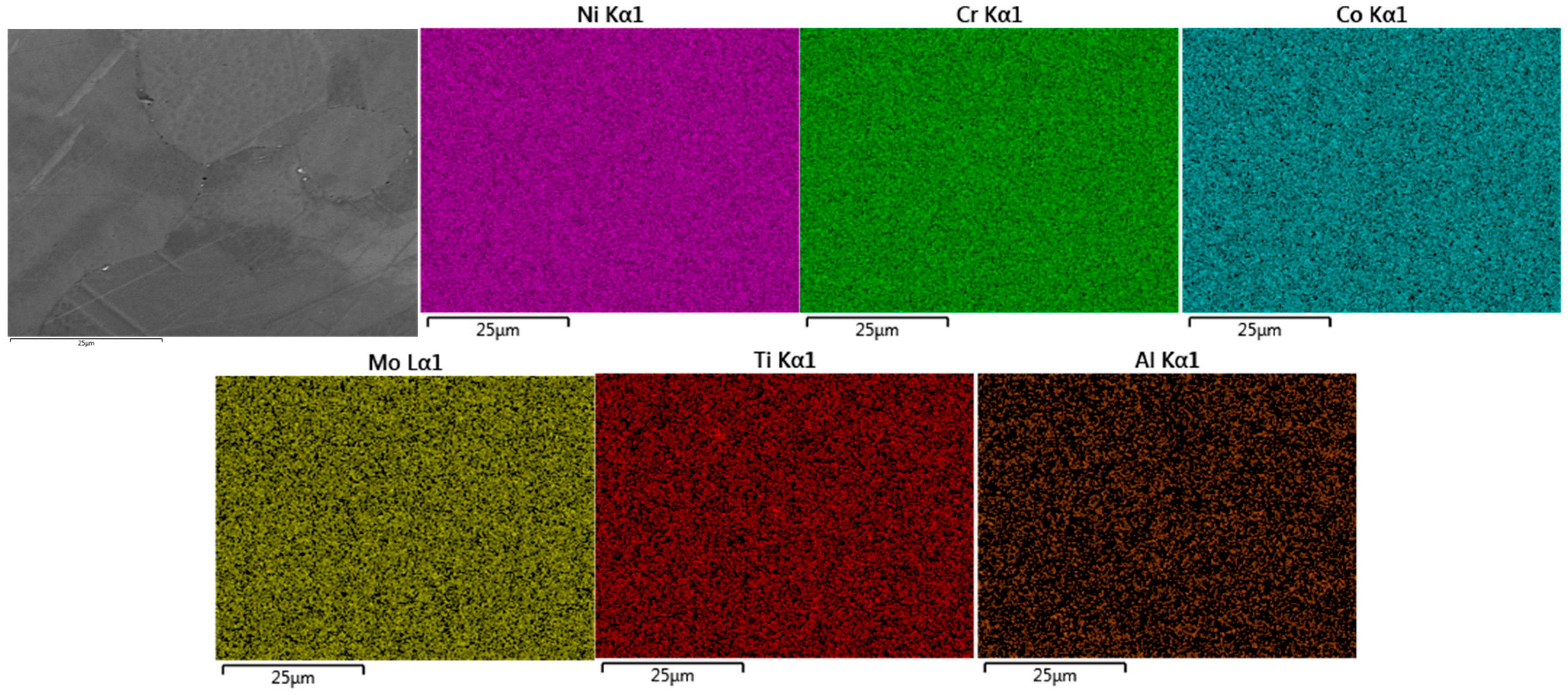
| Element | Ni | Co | Cr | Mo | Al | Ti | C | B | Zr |
|---|---|---|---|---|---|---|---|---|---|
| C263 | Balance | 20.0 | 20.0 | 5.9 | 0.5 | 2.1 | 0.06 | 0.001 | 0.02 |
| C263 Type | Temp. (°C) | UTS (MPa) | Max Load, Fm (kN) | Effective UTS (MPa) | Yield (MPa) | Yield Load, Fe (kN) | Effective Yield (MPa) |
|---|---|---|---|---|---|---|---|
| Cast | 0 | 649 | 1.372 ± 0.170 | 699 ± 62 | 430 | 0.335 ± 0.029 | 495 ± 42 |
| 780 | 560 | 0.880 ± 0.129 | 522 ± 47 | 338 | 0.254 ± 0.004 | 377 ± 5 | |
| SHT 90° | 0 | 1268 | 2.628 ± 0.348 | 1150 ± 125 | 843 | 0.512 ± 0.080 | 802 ± 118 |
| 780 | 0.476 ± 0.054 | 376 ± 19 | 0.273 ± 0.030 | 404 ± 44 | |||
| SHT 0° | 0 | 981 | 2.429 ± 0.181 | 1079 ± 65 | 709 | 0.463 ± 0.060 | 686 ± 88 |
| 780 | 0.742 ± 0.076 | 472 ± 27 | 0.309 ± 0.002 | 457 ± 2 | |||
| HSHT 90° | 0 | 1.962 ± 0.136 | 911 ± 49 | 0.473 ± 0.035 | 700 ± 51 | ||
| 780 | 1.116 ± 0.075 | 607 ± 27 | 0.281 ± 0.016 | 415 ± 33 | |||
| HSHT 0° | 0 | 2.450 ± 0.322 | 1086 ± 116 | 0.416 ± 0.060 | 616 ± 89 | ||
| 780 | 1.008 ± 0.107 | 567 ± 38 | 0.280 ± 0.012 | 397 ± 18 |
© 2017 by the authors. Licensee MDPI, Basel, Switzerland. This article is an open access article distributed under the terms and conditions of the Creative Commons Attribution (CC BY) license (http://creativecommons.org/licenses/by/4.0/).
Share and Cite
Davies, S.; Jeffs, S.; Lancaster, R.; Baxter, G. High Temperature Deformation Mechanisms in a DLD Nickel Superalloy. Materials 2017, 10, 457. https://doi.org/10.3390/ma10050457
Davies S, Jeffs S, Lancaster R, Baxter G. High Temperature Deformation Mechanisms in a DLD Nickel Superalloy. Materials. 2017; 10(5):457. https://doi.org/10.3390/ma10050457
Chicago/Turabian StyleDavies, Sean, Spencer Jeffs, Robert Lancaster, and Gavin Baxter. 2017. "High Temperature Deformation Mechanisms in a DLD Nickel Superalloy" Materials 10, no. 5: 457. https://doi.org/10.3390/ma10050457






